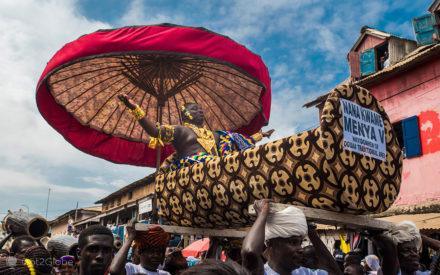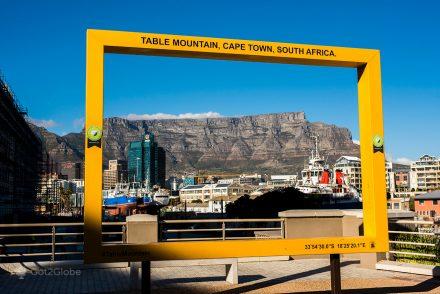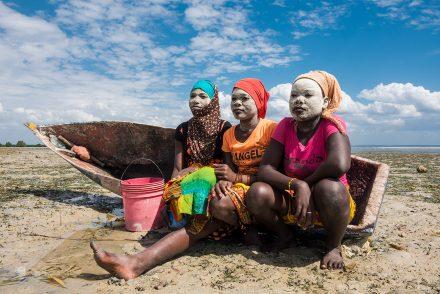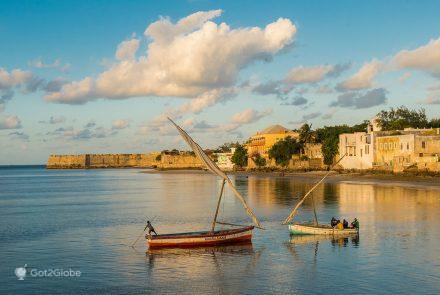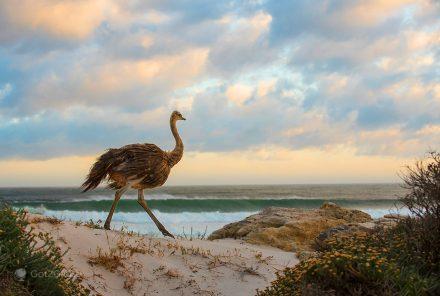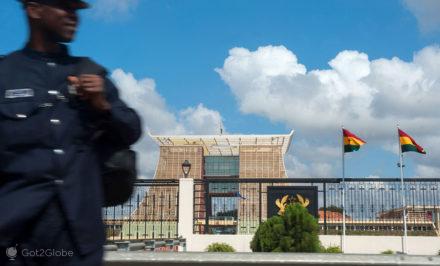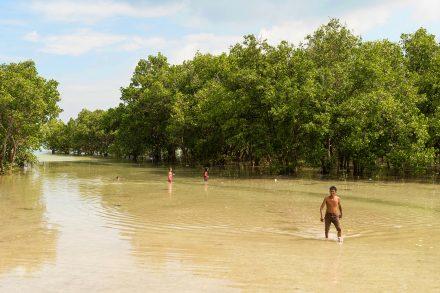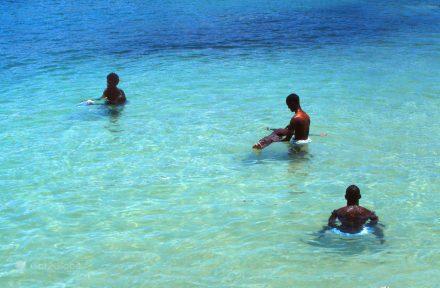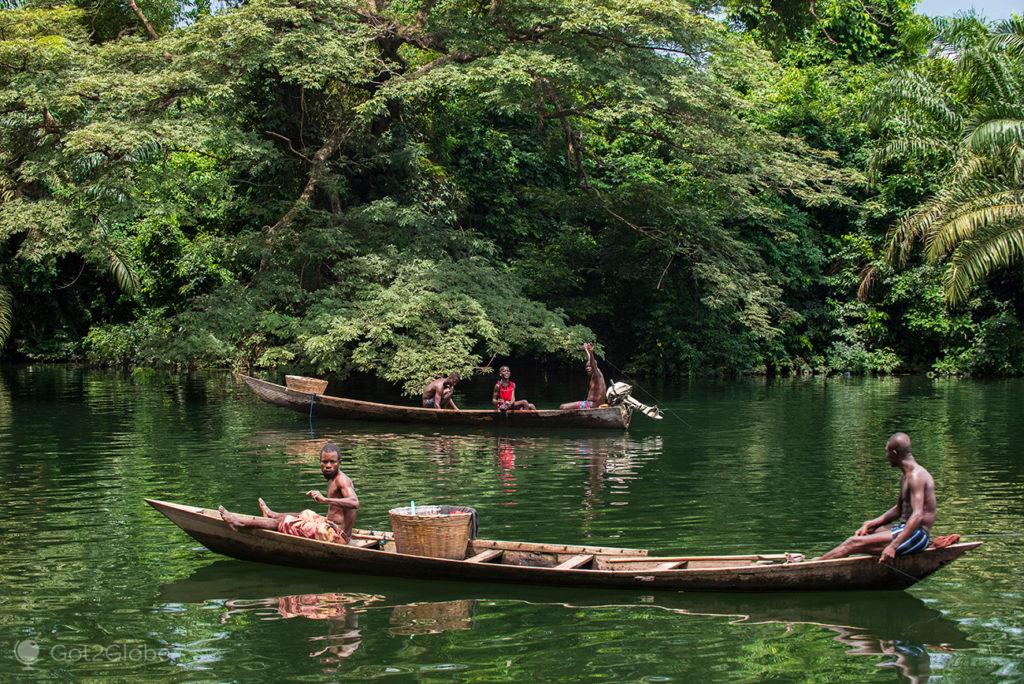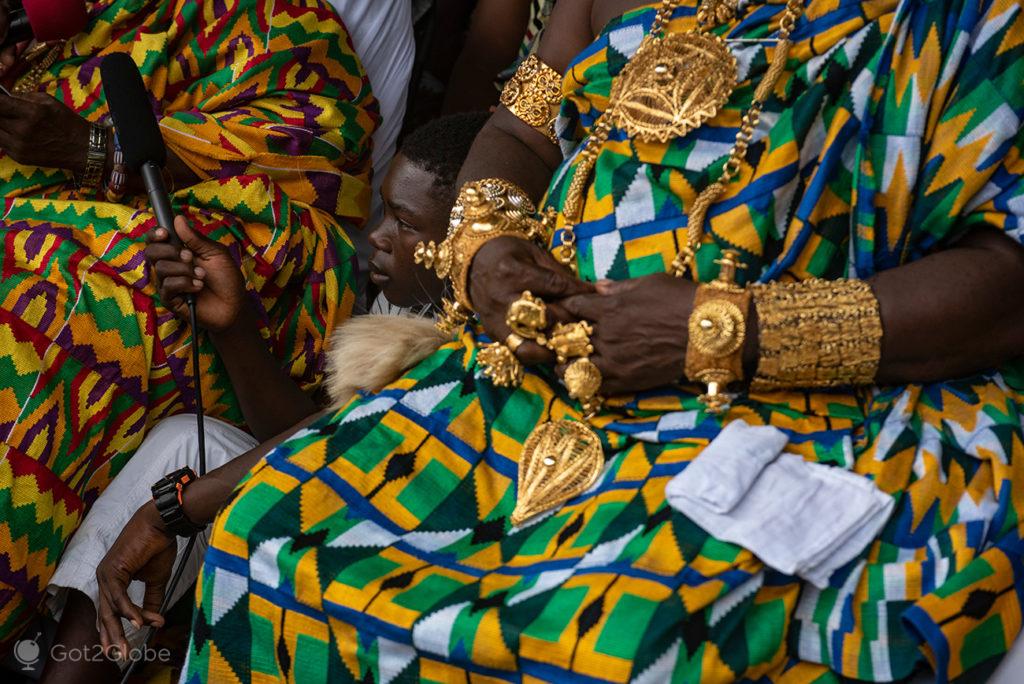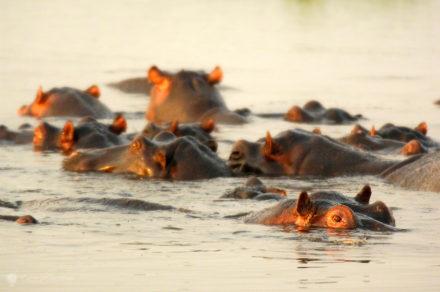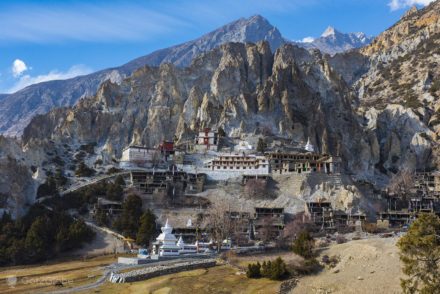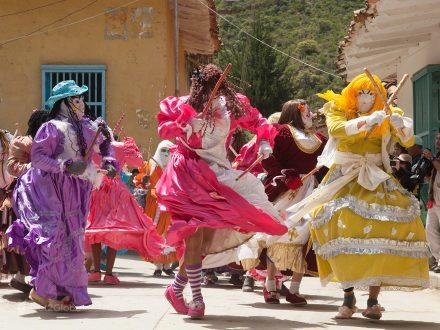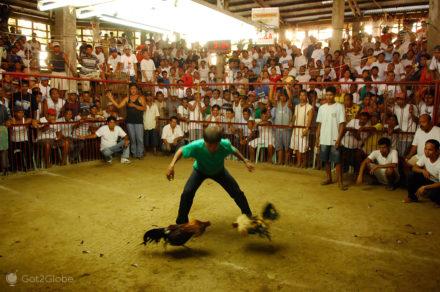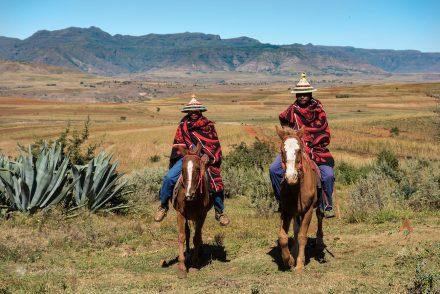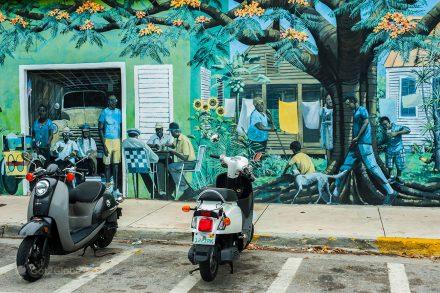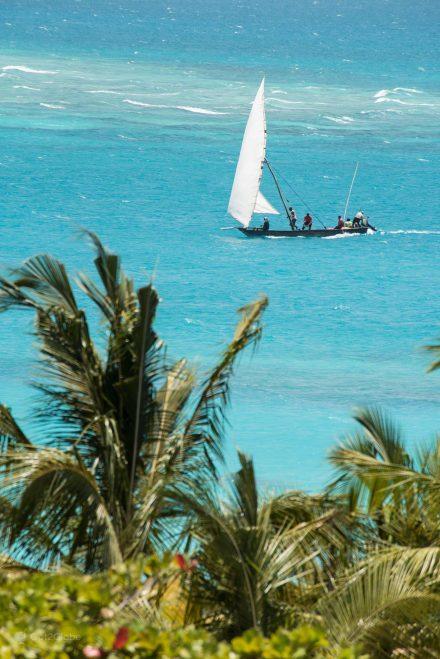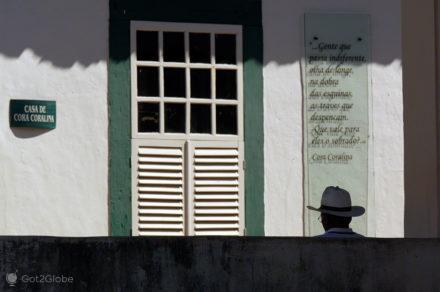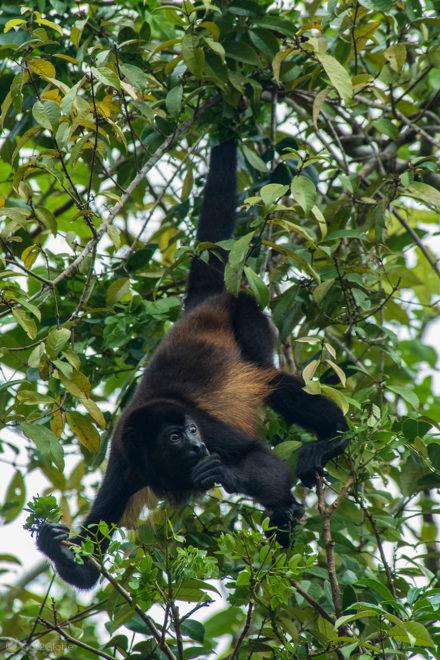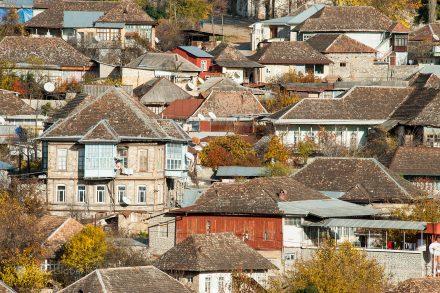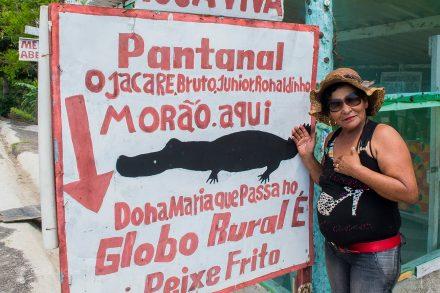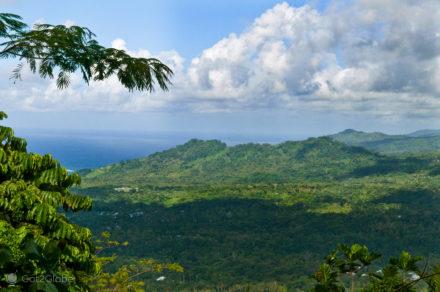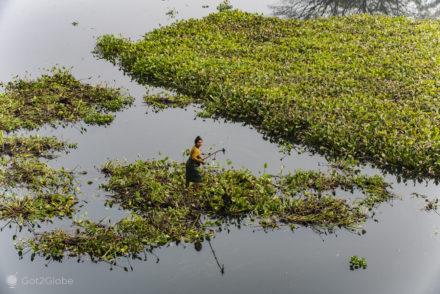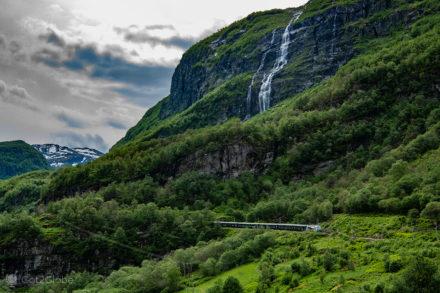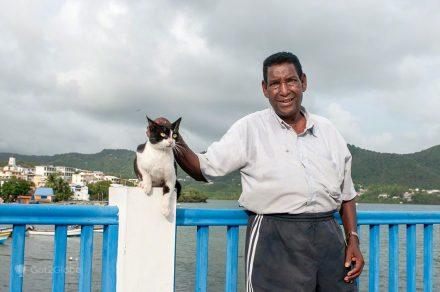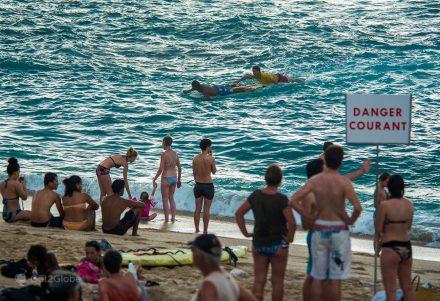The waves of the Atlantic break up the sand above. They unfold, vigorously, almost as far as the line of coconut trees at the top between the threshold of the Gold Coast and the N1 road that we travel from far away. Accra.
At a certain point, a meander of asphalt gives us a distant view of a white castle flanked by more stiff coconut trees and which seems to float between the blue of the ocean and the blue of the sky.
The configuration of the route does not take long to hide it even if we get closer, with each passing kilometer, to the surrounding village.
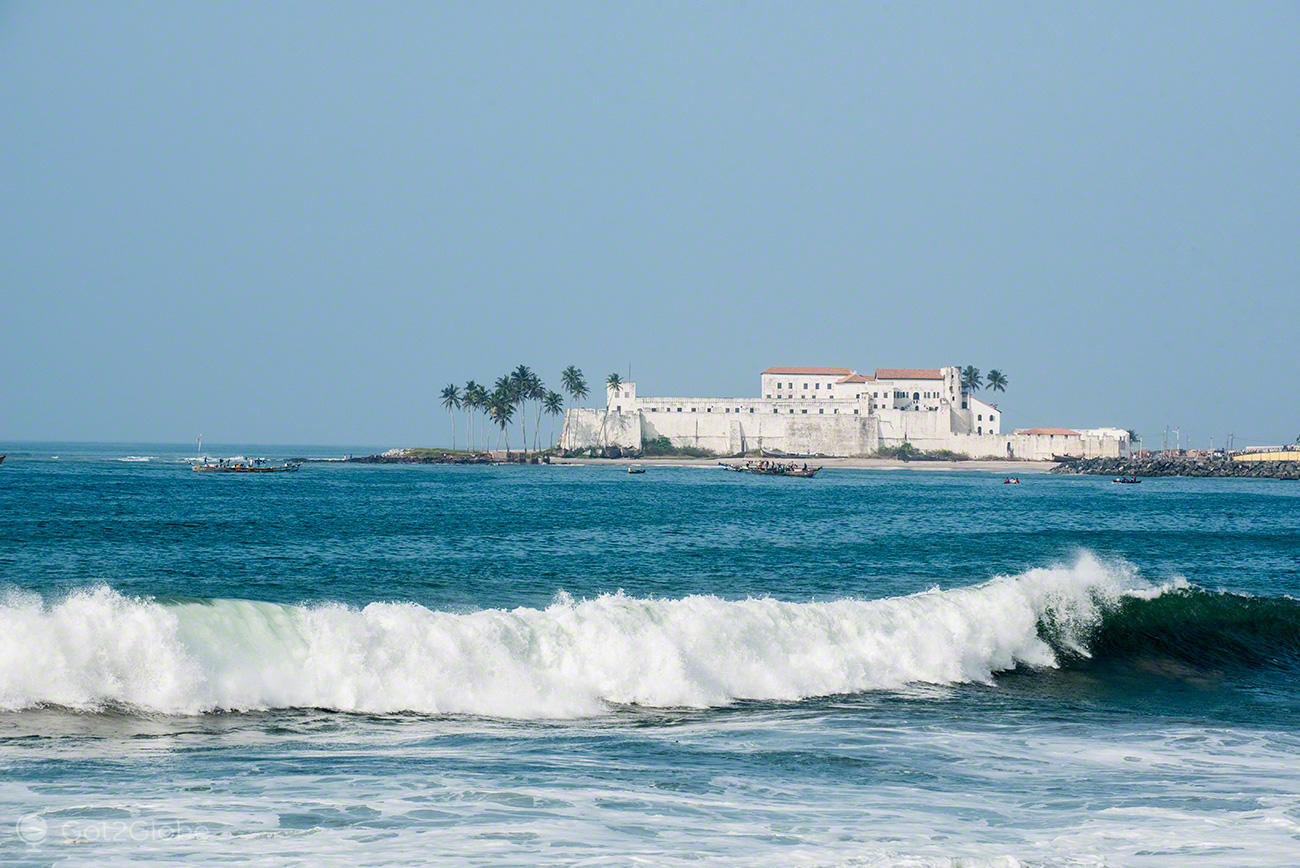
A wave unfolds in the Gulf of Guinea, with the fortress of São Jorge da Mina in the background.
The road once again surrenders to the caress of the waves. Then, it winds between small coves flooded with folk fishing boats or through a row of bright houses that thickens.
We leave the car. We completed what was missing on the route to the base of the tongue of land where we knew how to materialize the mirage of minutes ago. The first residents of the area are too busy to call our raid.
Elmina's Controversial Legacy
Until, with the castle ahead, in the communion of wandering flocks of goats and a frenzied crowd of fishermen and Ghanaian varinas, we are approached by some vendors and would-be guides, each with their own approaches to enchanting.
“What country are you from? Portugal? This was yours, you know, isn't it? … They found the right guide to explain to you how it all happened!”
We continue towards the fort to respond to competing and persistent proposals for the sale of services and crafts as patiently as possible.
This is how, semi-escorted, we arrive at the entrance to the old castle, isolated by moats and disguised in its imposing earth-facing façade, as supposed in a fortress built to preserve itself.
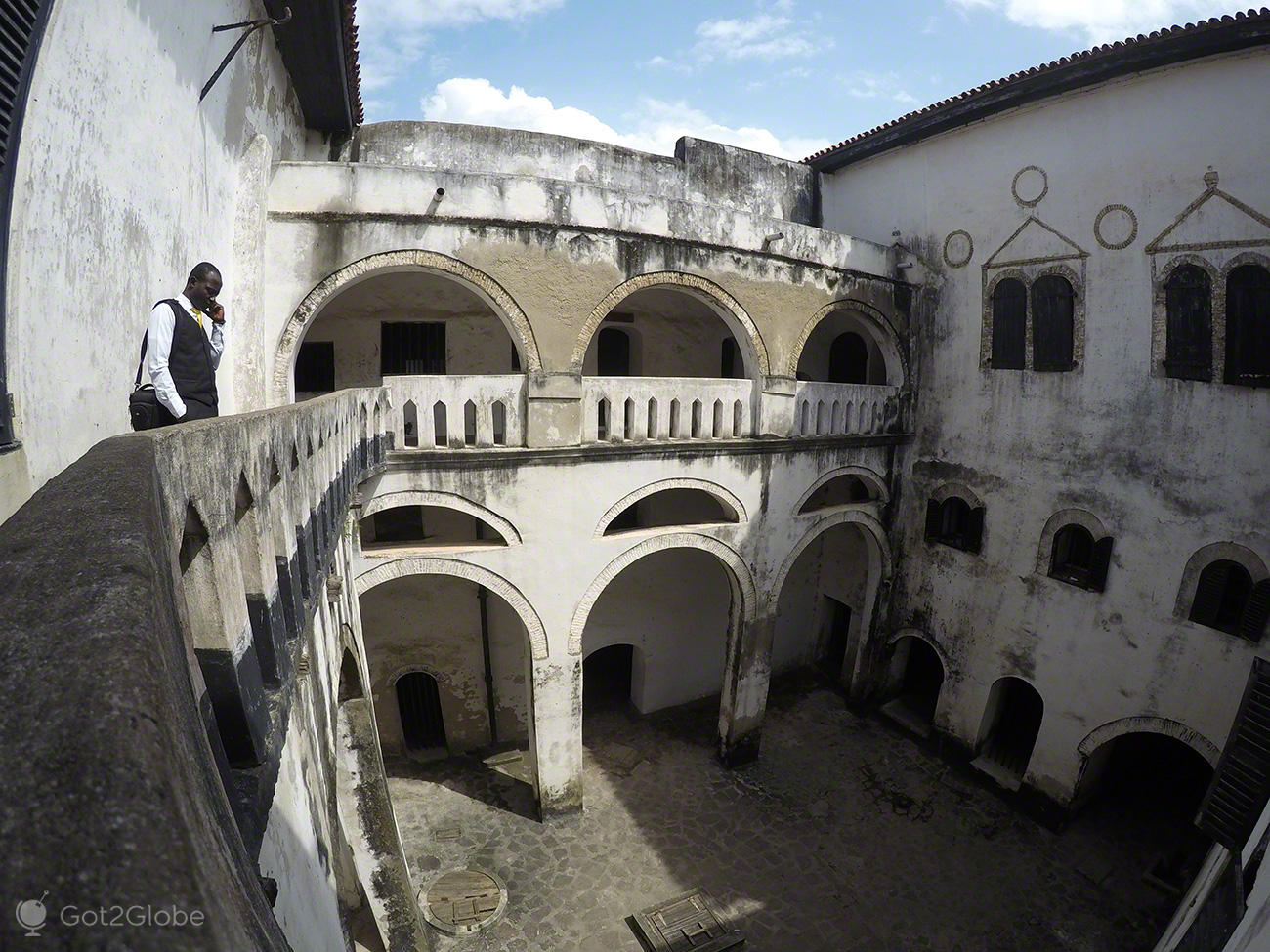
Ganês speaks on the phone over one of the balconies inside the São Jorge da Mina fort.
We invaded it, curious about what we would find inside, where Alex Afful, the guide pre-charged with introducing us to the monument, was waiting for us. Moments later, we were already following in her footsteps and her words in a dazzling journey into the epic but also sorrowful past of the current Elmina.
The Gold Coast as the Triumph of the Africa Discovery Project
Infante D. Henrique had been sending navigators to explore the African coast since 1418, instigated by rumors of an abundance of gold, ivory, precious stones and other riches.
Because of the desire to find an alternative route that would allow reaching the spices of Asia directly and thus discard the Arab traders, until then, unavoidable intermediaries.
For the church's interest in converting to the Christianity the peoples south of Iberia.
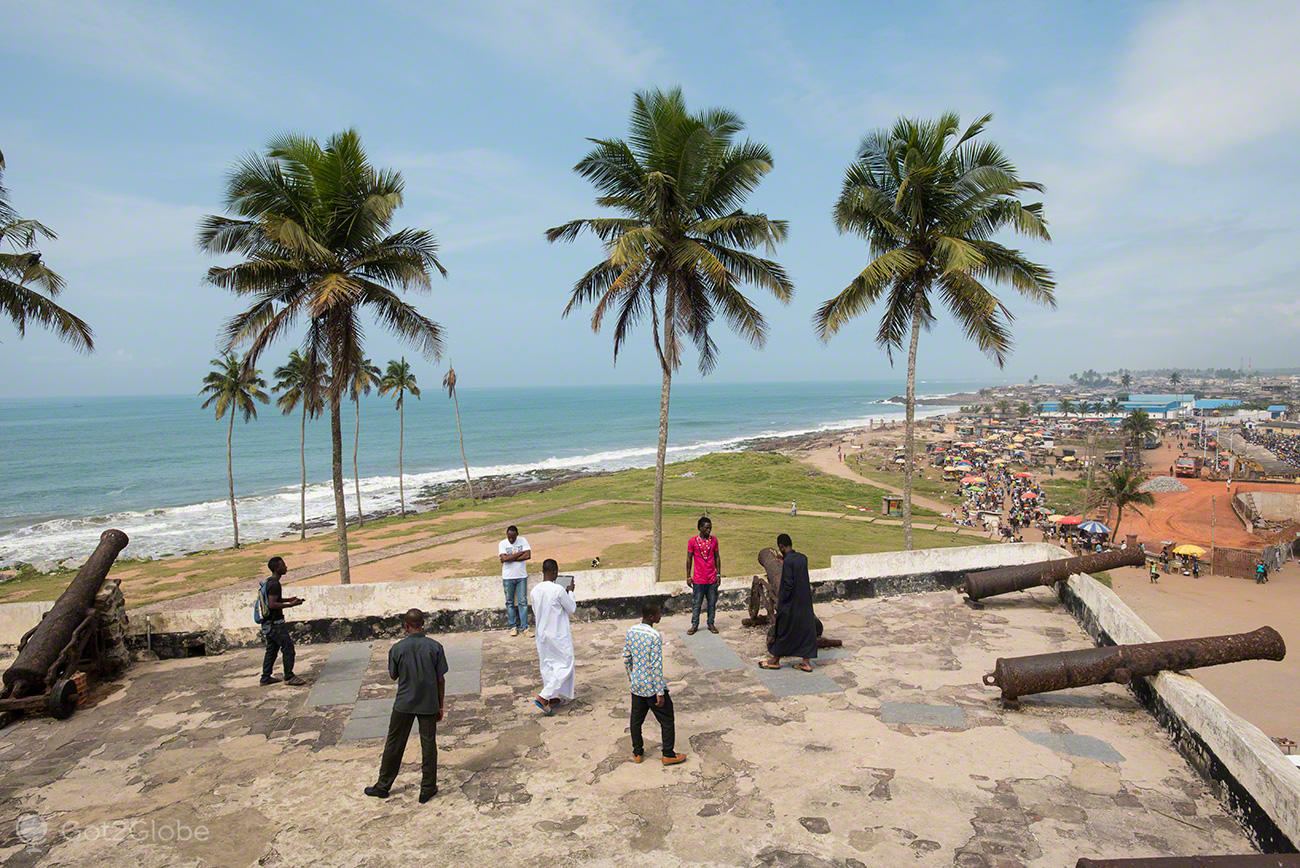
Ghanaian visitors in one of the cannon-filled courtyards of the São Jorge da Mina fort.
After fifty years in which these navigators arrived along the coast of Africa, in 1471, they reached the Mina area. Then Afonso V.
The King showed little interest in continuing to support the maritime expeditions and Guinea trade that had only recently begun to benefit the Crown. The king leased the exploration of the Guinea Coast, under a commercial monopoly regime, to a merchant named Fernão Gomes.
Upon arriving in the area of present-day Ghana, Fernão Gomes came across a gold trade already established between natives of different ethnicities and between these and the always inconvenient Arab and Berber merchants. Fernão Gomes hastened to impose his own rules, as was to be expected, supported by the Crown.
With the Treaty of Alcáçovas ensuring exclusive rights over the newly baptized Gold Coast, D. João II, the king that followed, decided that a new entrepot should be built to protect Portugal's gold trade in the Gulf of Guinea.
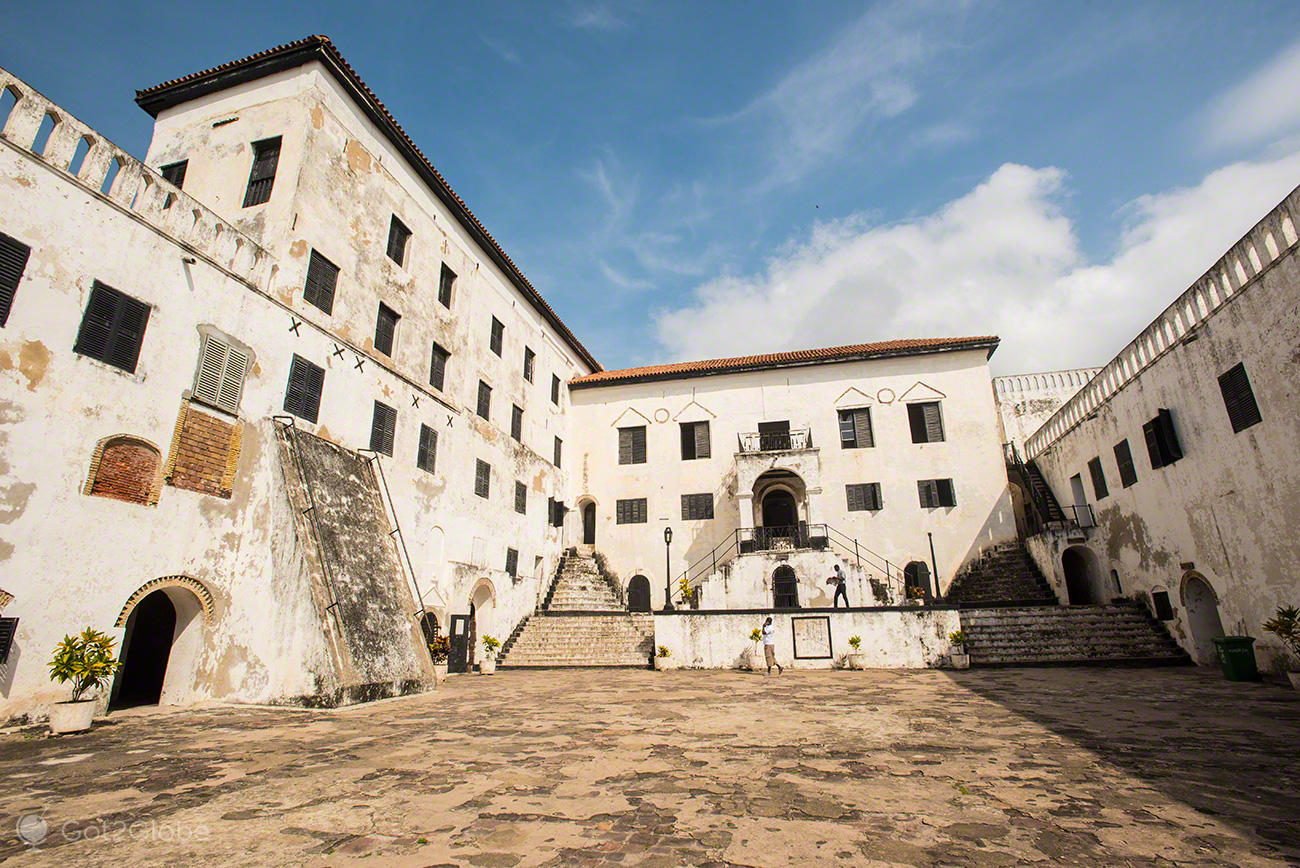
Interior of the fortress of São Jorge de Mina with its courtyard at the base of several imposing sections.
Elmina's Fortified Warehouse
The project was awarded to a knight of the Order of Aviz, awarded several commendations and advisor to the king. D. Diogo de Azambuja had fought side by side with Afonso V in the conquest of Alcácer-Ceguer. He was decisive in the War of Succession of Castile of 1475-1479 in which the enemy seriously injured his leg.
The new African adventure that D. João II entrusted to him made him even more famous. In 1481, Azambuja commanded a fleet of nine caravels and two ships that carried 600 soldiers, 100 masons and carpenters, and tons of stone and other materials needed to build the planned fortress.
A year later, Azambuja was already taking advantage of the war between the powerful ethnic groups in the region: the Akans, the Ashantis, the Fantis and others. Allied with the Akans, he got permission to build the fortress, a work that will have finished in 1482.
Afterwards, he sent the fleet back to Lisbon. He remained in Mina until 1484, with 60 soldiers – including Cristovão Colombo – and the additional task of deepening commercial contacts with the native population that would increase the Crown's profits.
As we follow Alex Afful, we witness the seriousness with which Azambuja carried out his mission. Because it was built on deep layers of sedimentary rock, the Mina fortress withstood the waves of the Atlantic that, as we have seen, continue to lash it.
Discovering the Great Fort in Portuguese Times
It has passed through time in such a way that it barely looks freshly built. Its three large patios remain intact: the main, the interior and the service. As we access them through steep staircases and wide walkways, we realize the degree of complexity and architectural clarity of the structure. We glimpse the endless Atlantic from its west-facing bastions.
We went up to the rooms built on top of the structure to house the Captain-Mor. We immediately notice how spacious they are and a permanent breeze from the ocean blows them. Unlike the divisions around the main courtyard that later served to imprison African captives.
Alex Afful stresses that the conventional slave trade only started after the Portuguese lost their strength to the Dutch.
Even so, it cuts short the guided visit to its darkest corners and enlightens us about the hardships that would, however, be committed there. “And this was the famous Door of No Return, similar to other forts and shacks along the African coast.
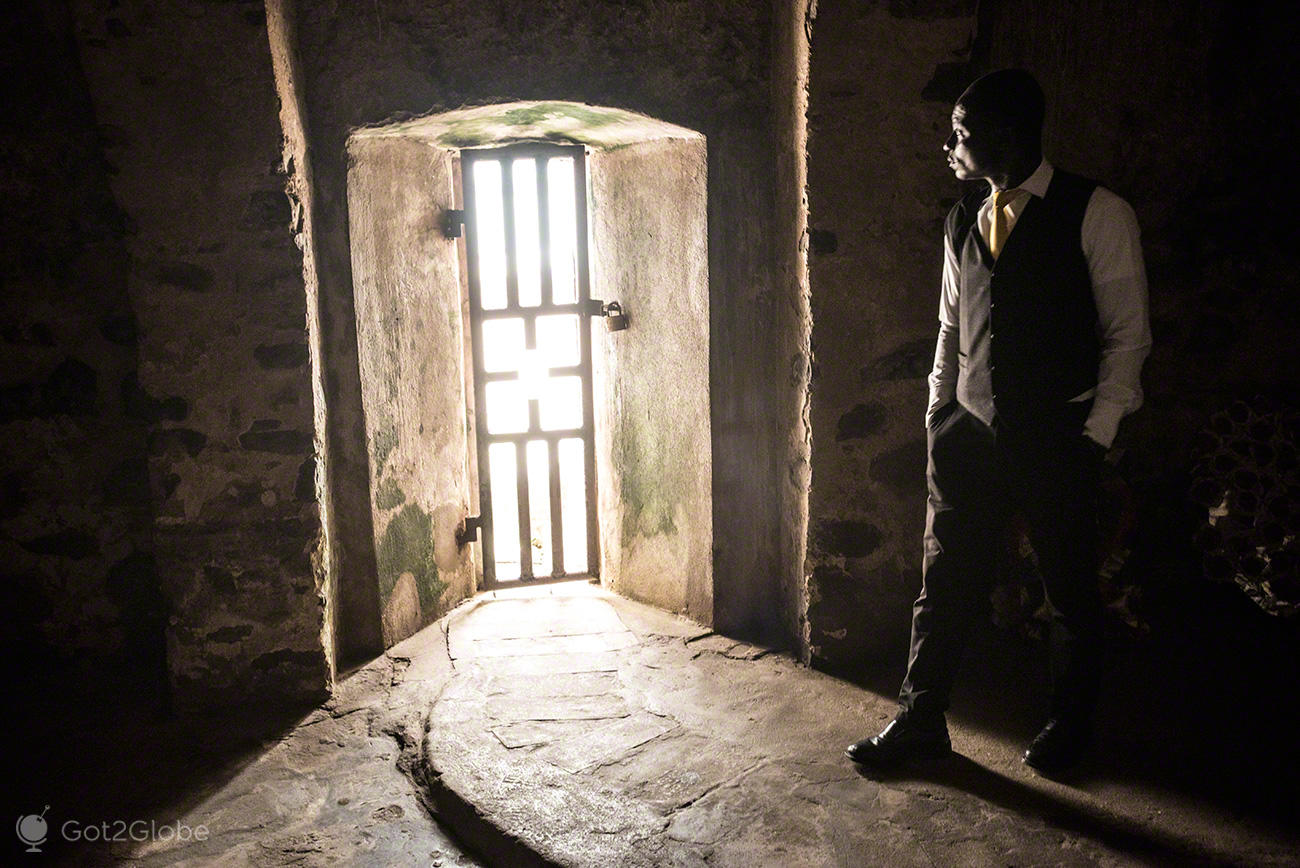
Driver visiting the fortress next to the door of no return from where Ghanaian slaves were sent to the American continent.
The Dark Dungeons of the Fort with Exit at the Door of No Return
From here, from this dark dungeon, slaves were chained and shipped to the boats. Those who survived the ocean crossing never saw Africa again.” We notice several wreaths of flowers placed by previous visitors in grief for their ancestors and, at the entrance to the fort, a black text inlaid in white marble that dictates:
”In the Eternal Memory: of the anguish of our ancestors. May those who died rest in peace. May those who return find their roots. May Humanity never again perpetrate such injustice against Humanity. We who live, swear that it will be so.”
We went up to a large balcony facing the village, which we ended up sharing with a group of Ghanaians, some dressed in jilabas, who photograph themselves with an iPad at the ready, among a battery of old black cannons. From this walled viewpoint, we can appreciate Elmina's multicolored houses and another fort that stands out on the hillside.
The River Benya Fishing Frenzy
And, most impressive of all, we witnessed the incredible bustle that took over the mouth of the River Benya.
One after another, dozens of boats beat the waves at the end of the estuary and entered the mouth of the river, pointing to the fishing docks that were full of boats and flooded with people and fish that we have witnessed to this day, in more than fifteen years of voyages. for the Earth.
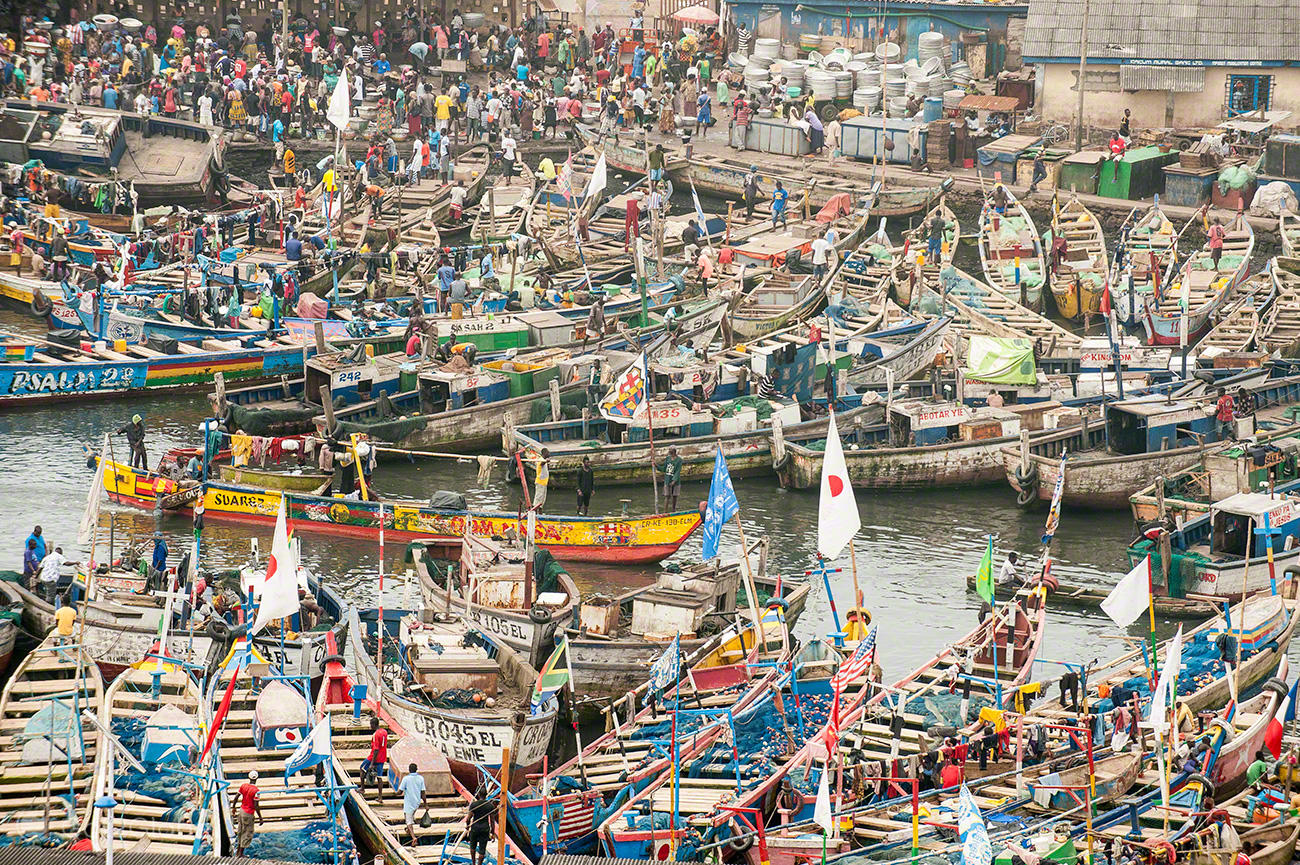
Hundreds of fishing boats colored by their paintings and small flags from various countries around the world, in the estuary of the river Benya.
We would have to take a closer look. Until then, we continued to discover the intriguing corners and secrets of the São Jorge de Mina fort.
At the height of the gold trade in the 300th century, more than 1504 tons of gold a year were exchanged for wheat, Arab fabrics and clothing, brass necklaces and articles, pots and pots that made a very special success. Between 1582 and 270.000, more than XNUMX pots were exchanged for gold.
Slaves brought from neighboring Benin and elsewhere were also exchanged for gold. Whatever the currency of exchange, gold abounded. In 1500, about 10% of the world's gold reserves.
French and English corsairs hastened to torment the Portuguese ships that anchored there.
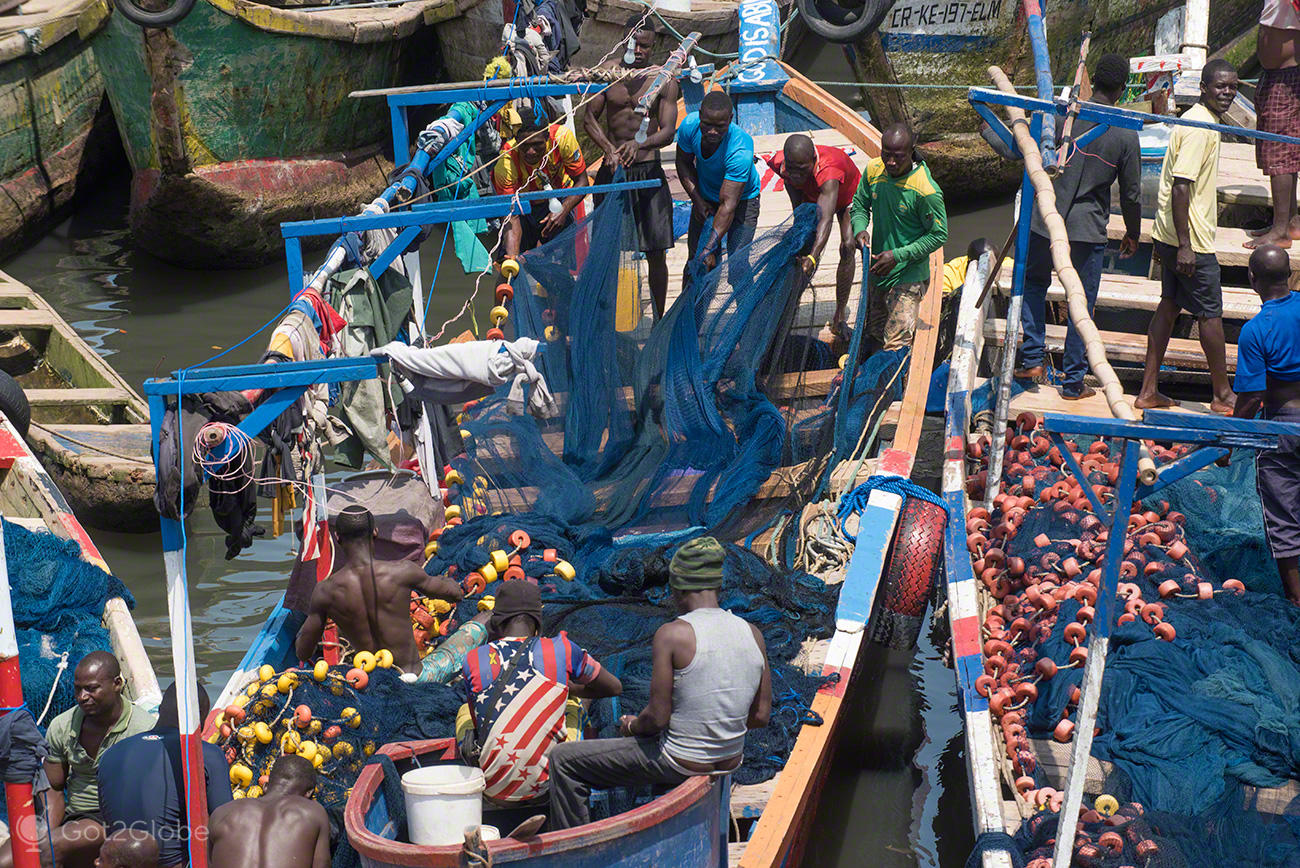
Ghanaian fishermen at work in the busy port of Elmina.
Holland's Inevitable Historical Interference
In the context of the Philippine dynasty, Spain came into conflict with the Países Baixos. These expanded their attacks on former Portuguese colonial possessions in both northeastern Brazil and the Gulf of Guinea.
In 1637, after five days of resistance by forty men who claim to be sick and ill-armed, they took the fortress of São Jorge de Mina, in the image of what they had done to other Portuguese forts on the African coast.
One of the most fascinating facts we are faced with is that the Dutch had as mercenary reinforcements from various parts of Europe. Also Tapuia Indians from Brazil who allied with Count Maurício de Nassau when the Dutch took over Pernambuco.
The new lords of Mina renamed and enlarged the fortress. But around 1620, gold declined. It became harder to get. The Dutch reacted.
They adapted this and other forts built by the Portuguese to a trade that – in a geographical route quite different from that taken by the Portuguese – had begun to generate exorbitant profits: the supply of African slaves to the colonies of the Americas, this with the sponsorship of the heads of the Akan ethnic groups, Ashanti and Fanti who captured them from rival tribes and supplied them to Europeans.
The Dutch Continuity of Transatlantic Slavery
The Ghanaian historian Kwesi Anquandah asserts that in the 650.000th century alone, the Gold Coast region exported more than XNUMX slaves to the American continent. A substantial part went through the Door of No Return of Mine. Between 1700 and 1755, many had as their destination the Brazil where they were called “mines”.
Haughty prisoners of war, they proved disobedient and unwilling to forced labor. At the Brazil, participated in most of the 1850th century slave revolts and gave rise to numerous quilombos. In XNUMX, the British prohibited and encouraged the end of the slave trade.
They even came to capture slave ships. Twenty-three years later, they also captured the fort of Mina from the Dutch and seized all of Ghana. As we have seen time and time again, a strong historical complicity persists, sung by the new idols of hip-hop and national rap between Ghana and mainly the West Indies and the USA.
In addition to their genetic heritage, unlike most of their African neighbors who, with the exception of Nigeria, are Francophone, these nations preserve an Anglophone language and culture.
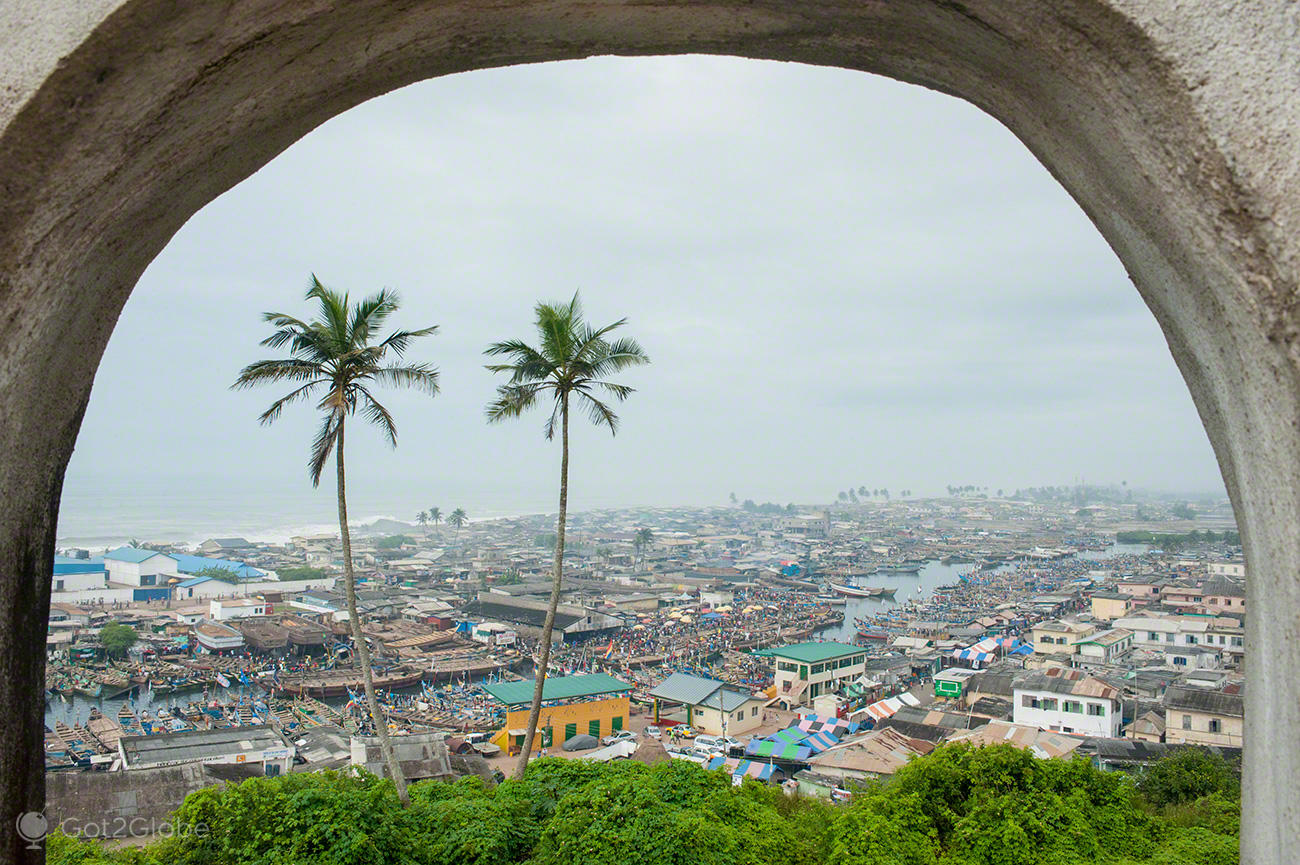
View of Elmina harbor from the Coenraadsburg fort, a fortress built after the conquest of Saint George of Mina and the region by the Dutch.
After leaving the fort that we are still skirting around the outside, we venture into the banks of the Benya River, eyed by the wraths, who are infuriated as soon as we raise their cameras and, almost all of them, are quick to inform us of the price of their images: “it will cost you 20 give in! ".
That weak disposition for photography forces us to complex diplomatic maneuvers.
We put them into practice with patience even in the chaotic and pestilent den of the shores and fishing docks, among boats with little flags from hundreds of countries around the world.
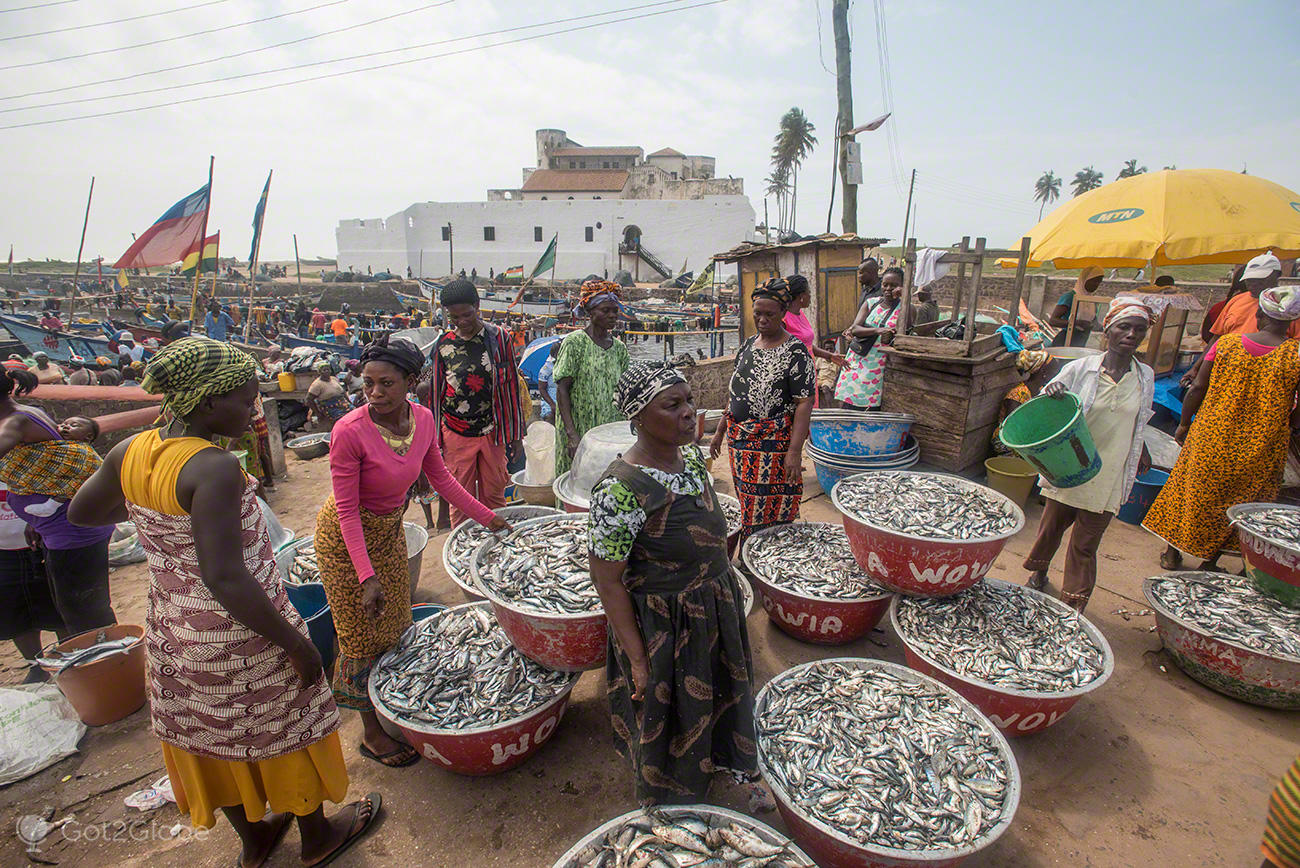
Fish sellers display their product right in front of the fortress of São Jorge da Mina
And countless specimens freshly caught in the offshore Atlantic today, the arduous but assured prosperity of Elmina's proud Ghanaians.
We would have to proceed to the West, in search of the Nzulezu lake village.

